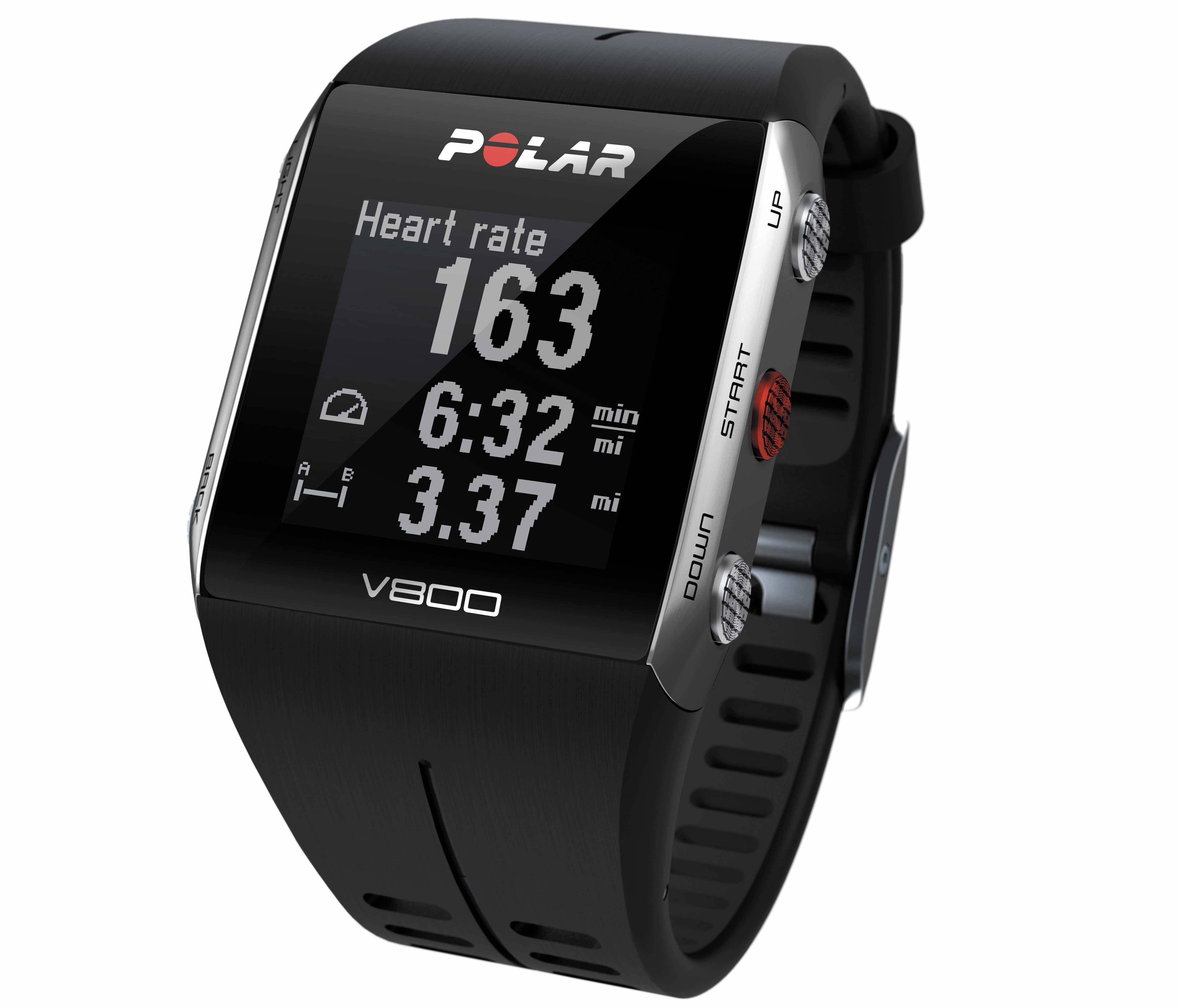24/7 Tracking: A Look At The The Polar V800

$470 ($520 with Heart Rate sensor), Polar.com
The Polar V800 goes beyond the typical swim, bike, run features.
Since the Polar V800 launched in spring of 2014, the company has continued to add more updates to its already robust list of features. For the triathlete who wants to track everything—not just swim, bike and run but also recovery, sleep and daily steps—the slim, versatile, V800 offers a wide variety of data.
Training
At first, the V800 could only track heart rate in the water (wearing the Polar H7 strap), but now pool swimming metrics (including which stroke you’re doing) have been added, and an open-water distance mode is planned for March 2015. As a cycling computer, it tracks data well—if you have Bluetooth Smart sensors (cadence, speed or the Polar Kéo power meter), they’ll sync up easily—but because it’s a wristwatch, you need a Polar mount or your own clever solution to make it a handlebar display.
Of the three sports, the V800 does running best. Before you head out, you can create your own workout plan on Polar Flow (Flow.polar.com), the company’s hub for tracking and analyzing workouts. Say you want to do a five-mile run with 15 minutes at a certain pace or heart rate zone—you can program the watch to buzz or beep if you stray out of those confines. If you want to dive even deeper into run data, Polar also sells a Bluetooth sensor footpod ($80) to analyze your cadence and stride length.
On the intuitive Polar Flow site, you can view your activities in a Strava-style feed or switch to Diary to see a whole month of your training at once. Polar has also added the ability to export sessions into third-party services like Training Peaks and Strava.
RELATED: 6 Power Meters Reviewed
Racing
You can pre-program the watch to Triathlon mode and select all the data fields you’ll want to view for individual sports so that you can switch between them once one is over (while you’re switching, it’ll track your transition time). Upon completion of the race, you can check out individual segments or analyze your day as a whole.
RELATED – 2015 Triathlete Buyer’s Guide: Watches
Everyday
By now, you know that sitting too much is detrimental to overall health. The 24/7 Activity Tracker alerts you if you’ve been inactive for too long. On the flip side, it will also account for errands or playtime with your kids by totaling your steps for the day (visible on your phone’s Polar app or Polar Flow). Plus, wear it to bed to get a reading of your sleep duration and quality.
RELATED: Can Fitness Trackers Benefit Triathletes?
Recovery
Factoring in your training load as well as recovery, Polar will give you an overall “Recovery Status.” Their “Orthostatic Test”—a simple seated-to-standing heart rate test, essentially—to determine your fatigue levels and theoretically advise you on if you need to back off your training or if you’re good to keep going.
Features slated for 2015:
– Get alerts from incoming calls, messages and social media apps
– Control your phone’s music
– Track your distance in open water